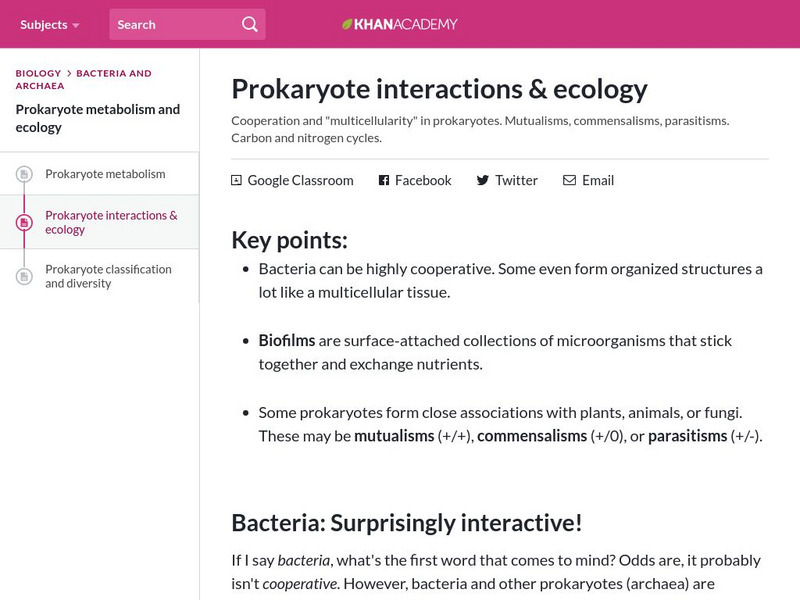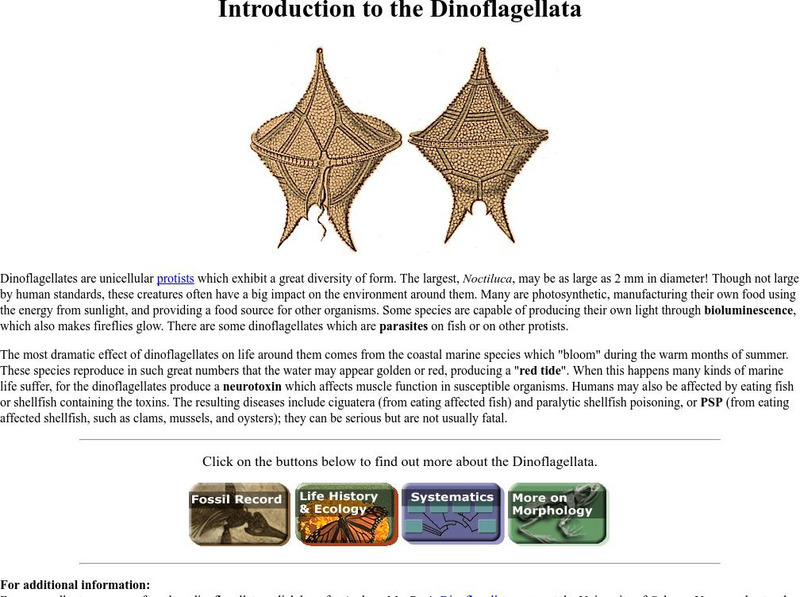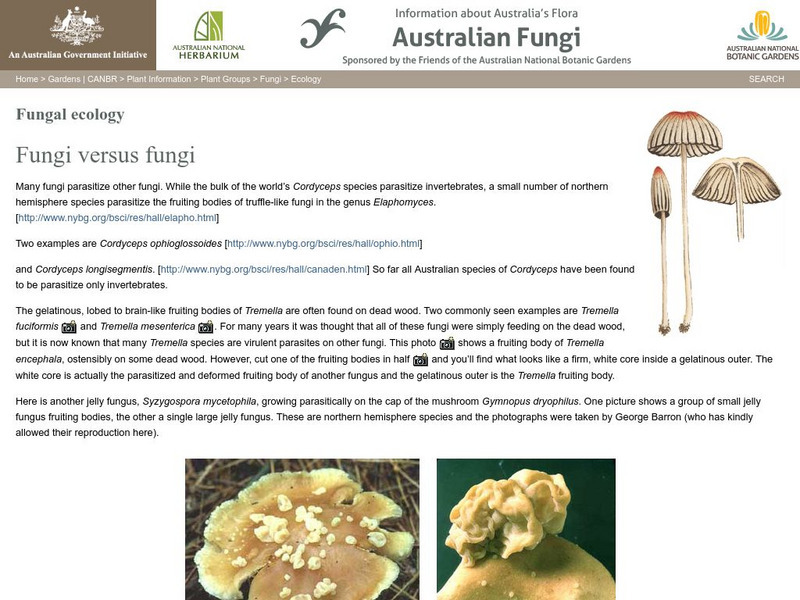Curated OER
Supermarkets, Sustenance and Sustainability
Students investigate jungles and the people who depend upon them. In this sustainability lesson, students research wild life conservation and discover the importance of a jungle to Amazonian people. Students create a group...
Curated OER
Studying a Piece of an Ecosystem
Students carry out an outdoor land study in which they identify organisms living in the soil, and any other animals living within the site. Groups also examine abiotic factors. They respond to a series of questions concerning their data...
Curated OER
The Environment and Interactions of Living Organisms
Students study the environment and interactions of living organisms. They identify abiotic and biotic factors and create a foldable and vocabulary cards. They create a poster illustrating soil and watch a video to study symbiosis.
Curated OER
What Structures and Behaviours Can Be Observed in Vinegar Eels?
Students view vinegar eels under a microscope at different magnifications. They use a DigiScope with the camera attachment in place of the eyepiece. Students count the number of thrashing movements in 10 seconds. They repeat this three...
Curated OER
Wetlands - Food Web Relationships
In this food web relationships worksheet, students click on the links to learn about the food web relationships in the wetlands and answer short answer questions about it. Students complete 8 questions total.
Curated OER
Saving Habitat
Learners pick an animal native to Maryland and research how populations of that animal might be affected by land use changes over the past thirty years. They predict population trends for the next thirty years.
Curated OER
Household Pests
Sixth graders discover the various habitat requirements for assorted household pests from ants to wasps. They conduct various activities including researching the life cycles moths, cockroaches, and mosquitoes
Curated OER
Zoology
In this zoology word search, students find 30 words. This is a very difficult puzzle with complicated science vocabulary, but there is a word bank.
National Geographic
National Geographic: Ecological Relationships
In this lesson, students learn about different types of ecological relationships, including symbiosis, mutualism, commensalism, and parasitism. Includes handouts and a vocabulary list with definitions.
CK-12 Foundation
Ck 12: Biology: Community Ecology Study Guide
This comprehensive study guide covers the main terms and concepts needed for a unit on community ecology.
Khan Academy
Khan Academy: Prokaryote Interactions & Ecology
Learn about cooperation and "multicellularity" in prokaryotes including mutualisms, commensalisms, parasitisms. Also find out the role of prokaryotes in the carbon and nitrogen cycles.
BiologyWise
Biology Wise: Examples of Parasitism
Explains what parasitism is and provides a few examples of parasitic relationships.
Palomar Community College District
Palomar College: Parasitic Flowering Plants
The ecology and natural history of plants that live at the expense of other organisms is described in detail at this site from the Palomar College. Great material for a report or presentation.
BioMan Biology
Bio Man Biology: Angry Aliens: Ecology
Teach aliens about ecology as you play this game, and review your own understanding in the process. Topics covered include levels of organization, ecological relationships, nutrition and energy, cycles (water, carbon, and nitrogen), and...
CK-12 Foundation
Ck 12: Biology: Symbiotic Relationships of Fungi
[Free Registration/Login may be required to access all resource tools.] Discusses parasitic and mutualistic relationships of fungi.
PBS
Pbs Learning Media: Coral Reef Connections
Dive in and explore what makes this beautiful world so fragile. In this Web feature, from the PBS series "Evolution," discover how coevolution has shaped the ecological relationships among reef creatures.
Science Struck
Science Struck: Symbiotic Relationships in the Tundra
Explains what mutualism, commensalism, and parasitism look like in a tundra biome.
Science Struck
Science Struck: Symbiotic Relationships in the Rainforest
Explains what mutualism, commensalism, and parasitism are.
Other
The Sea Slug Forum: Symbiosis and Commensalism
Question and answer site that contains a discussion of commensalism as it pertains to sea slugs. Nice photographs of aquatic commensalistic relationships.
University of California
Ucmp: Annelids Life and History
Description of the life history and ecology of Annelids.
CK-12 Foundation
Ck 12: Life Science: Symbiosis
[Free Registration/Login may be required to access all resource tools.] Symbiosis describes a close and long-term relationship between different species. At least one species will benefit in a symbiotic relationship. There are three...
CK-12 Foundation
Ck 12: Life Science: 9.6 Roundworms
Explore the characteristics and ecological interactions of roundworms.
University of California
Ucmp: Dinoflagellates
The University of California provides background material on dinoflagellates which exhibit bioluminescence. Site includes information on their fossil record, ecology, and structure.
Australian National Botanic Gardens
Australian Government: Fungi Versus Fungi
This enlightening site examines how certain fungi parasitize other fungi.

















